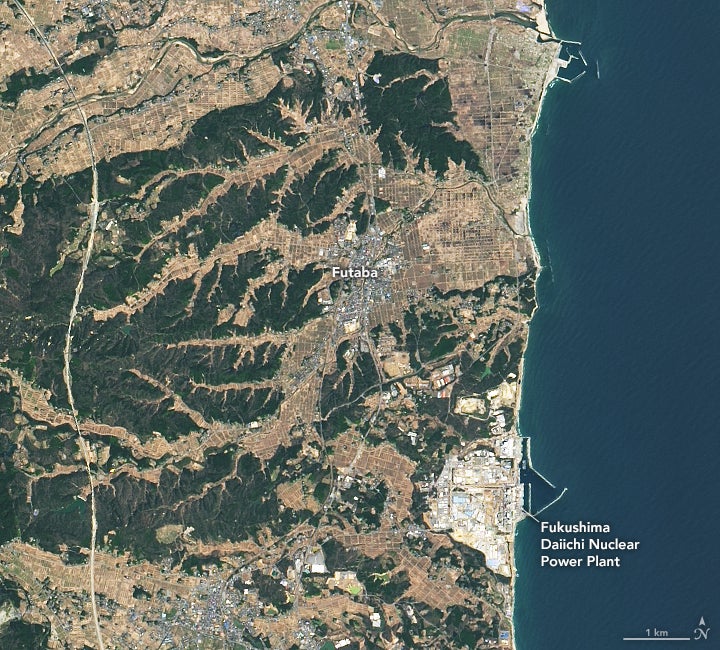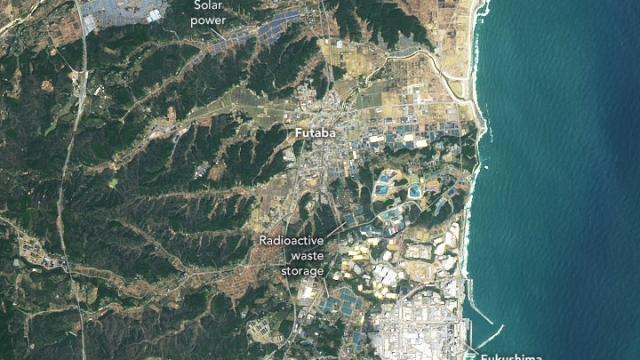Satellite images captured by NASA’s Landsat 8 show how Fukushima, Japan has transformed since a tsunami devastated the region in 2011, setting off a nuclear disaster that is still being cleaned up. Today, vast areas of solar panels can be seen covering the land around Fukushima Daiichi Nuclear Power Plant.
A slider image released by NASA’s Earth Observatory shows the stark difference in the region from 2014 to 2021. The image below, captured on April 13, 2014, shows the area just three years after the earthquake and subsequent tsunami, which killed more than 15,000 people. The more recent image, shown above, was taken March 31, 2021 and shows recent solar panel installations. According to Japan’s Nikkei newspaper, the government there is investing billions to turn the area into a hub for solar and wind power.

Following the nuclear disaster, Fukushima’s regional government set a goal of fully relying on renewable energy by the year 2040 in order to resolve the massive gap left behind by the destruction of the power plant. Nuclear power once provided about a quarter of Japan’s electricity. But since the nuclear meltdown, Japan has increased its dependence on other types of energy sources. (Nuclear energy is not technically renewable, but it does not produce greenhouse gas emissions.) Renewable energy accounted for 43% of Fukushima’s energy consumption in 2020, a major upgrade from 24% in 2011, according to The Japan Times. On the other hand, the country has also increasingly relied on coal and natural gas as a substitute for nuclear energy, according to the U.S. Energy Information Administration.
Cleanup at the nuclear plant has been slow going and immensely challenging. Earlier this year, a robotic probe managed to capture photos of what appear to be melted globs of nuclear fuel. Controversially, officials have decided to dump radioactive water into the ocean, angering the local fishing industry.
